Creating a thriving garden that produces abundant harvests, stunning blooms, and lasting satisfaction requires more than just enthusiasm and good intentions. It demands careful planning, strategic thinking, and a systematic approach that takes into account everything from soil conditions and climate patterns to plant compatibility and seasonal timing. An epic gardening planner serves as your roadmap to success, transforming scattered ideas and hopeful wishes into a concrete, actionable strategy that maximizes your garden’s potential while minimizing common pitfalls and frustrations.
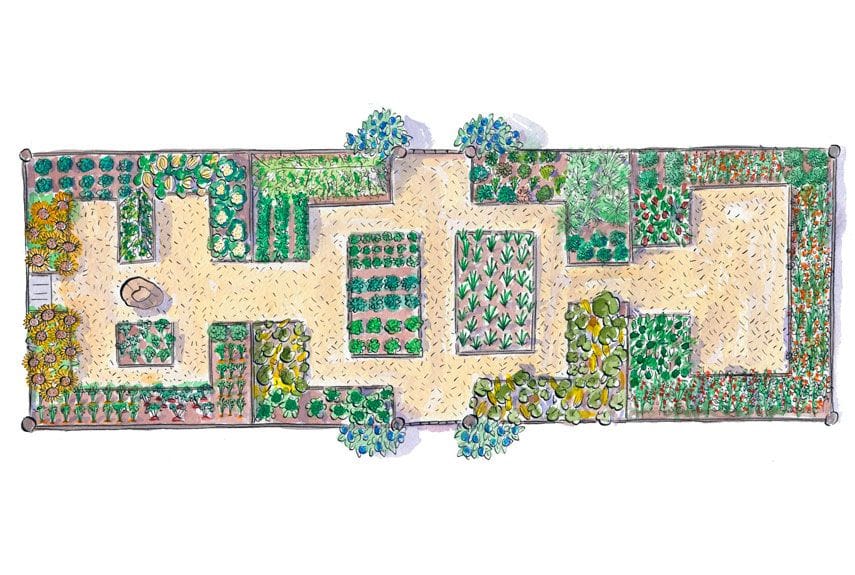
The difference between a mediocre garden and an epic one often lies not in the gardener’s experience level or the size of their plot, but in the quality and thoroughness of their planning process. A well-crafted gardening plan considers the unique characteristics of your specific location, your personal goals and preferences, the time and resources you have available, and the countless variables that influence plant growth and garden success. It serves as both a practical guide for day-to-day decisions and a long-term vision that evolves and improves with each growing season.
Modern gardening planning has evolved far beyond simple sketches on paper, though those certainly still have their place. Today’s epic gardening planners incorporate scientific understanding of plant biology, soil science, and ecological relationships, while also embracing traditional wisdom passed down through generations of successful gardeners. They recognize that every garden is a complex ecosystem where plants, soil organisms, beneficial insects, and environmental factors all interact in intricate ways that can either support or hinder your gardening goals.
This comprehensive guide will walk you through every aspect of creating and implementing an epic gardening planner that transforms your outdoor space into a productive, beautiful, and sustainable garden ecosystem. Whether you’re starting with a blank slate or looking to optimize an existing garden, these planning principles and practical strategies will help you achieve results that exceed your expectations while building a deeper understanding of the natural processes that make gardens thrive.
Understanding Your Garden’s Foundation
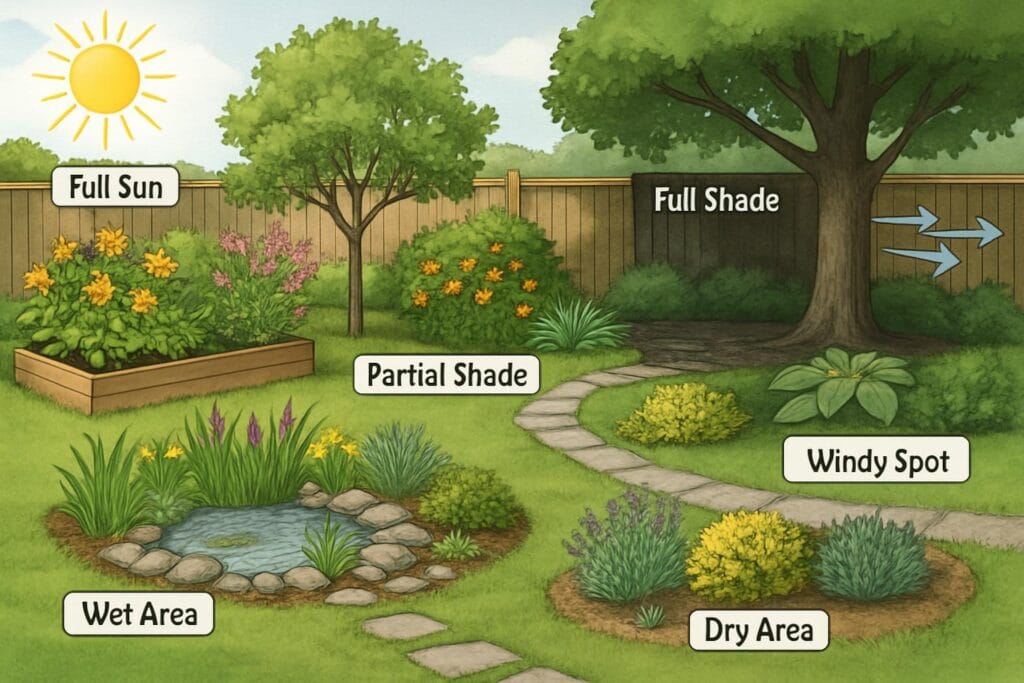
Before you can create an effective gardening plan, you must thoroughly understand the foundation upon which your garden will be built. This foundation encompasses not just the physical characteristics of your site, but also the environmental conditions, existing ecosystem, and practical constraints that will influence every aspect of your gardening success. Taking time to conduct a comprehensive site analysis may seem tedious, but this investment in understanding will pay dividends throughout every growing season.
Assessing Your Site’s Physical Characteristics:
Begin your planning process by creating a detailed map of your available gardening space. This doesn’t require professional surveying equipment, but it should be reasonably accurate and include key measurements, existing structures, and notable features. Walk your property at different times of day and in various weather conditions, observing how sunlight moves across the space, where water tends to collect or drain away quickly, and how wind patterns affect different areas.
Pay particular attention to microclimates within your garden space. These are small areas that experience slightly different growing conditions than the surrounding area due to factors like building shadows, reflected heat from pavement or walls, protection from wind, or variations in elevation and drainage. A south-facing wall might create a warm microclimate perfect for heat-loving plants, while a low-lying area might stay cooler and moister, ideal for plants that prefer those conditions.
Document the soil conditions throughout your garden area, noting variations in texture, drainage, and apparent fertility. Soil can vary significantly even within a small space, and understanding these differences will help you match plants to their ideal growing conditions or identify areas that need improvement. Consider conducting soil tests to determine pH levels, nutrient content, and organic matter percentage, as this information will guide your soil improvement efforts and plant selection decisions.
Understanding Your Climate and Growing Conditions:
Your local climate provides the overarching framework within which all your gardening activities must operate. While you can’t change your climate, understanding it thoroughly allows you to work with natural patterns rather than against them, leading to greater success with less effort and frustration. Research your area’s hardiness zone, average frost dates, typical precipitation patterns, and seasonal temperature variations.
However, don’t stop with general climate information. Develop a detailed understanding of your specific location’s weather patterns by observing and recording conditions over time. Keep track of when you experience your last spring frost and first fall frost, as these dates can vary significantly from published averages and will determine your actual growing season length. Note patterns in summer heat, winter cold, rainfall distribution, and extreme weather events that might affect your garden.
Understanding your area’s natural growing seasons will help you plan planting schedules, succession plantings, and harvest timing. Some regions have distinct wet and dry seasons, while others experience more evenly distributed precipitation. Some areas have long, gradual transitions between seasons, while others experience rapid changes that require quick adaptation. This knowledge will inform decisions about when to start seeds, when to transplant, and how to extend your growing season.
Evaluating Existing Conditions and Infrastructure:
Take inventory of existing conditions that will influence your garden planning. This includes existing vegetation, both desirable and undesirable, that might need to be preserved, relocated, or removed. Mature trees and shrubs represent significant investments of time and resources, so plan around them whenever possible, taking advantage of the microclimates and aesthetic value they provide.
Assess your current infrastructure, including water access, tool storage, pathways, and any existing garden structures. Consider how these elements support or limit your gardening activities, and identify improvements that would enhance your efficiency and enjoyment. Water access is particularly crucial, as inadequate irrigation can limit your garden’s potential regardless of how well you plan other aspects.
Evaluate the accessibility of different areas of your garden, considering factors like distance from your house, ease of carrying tools and materials, and the physical demands of working in various locations. Areas that are difficult to access tend to be neglected, so plan accordingly by either improving access or choosing low-maintenance plantings for these spaces.
Creating Your Garden Layout and Design
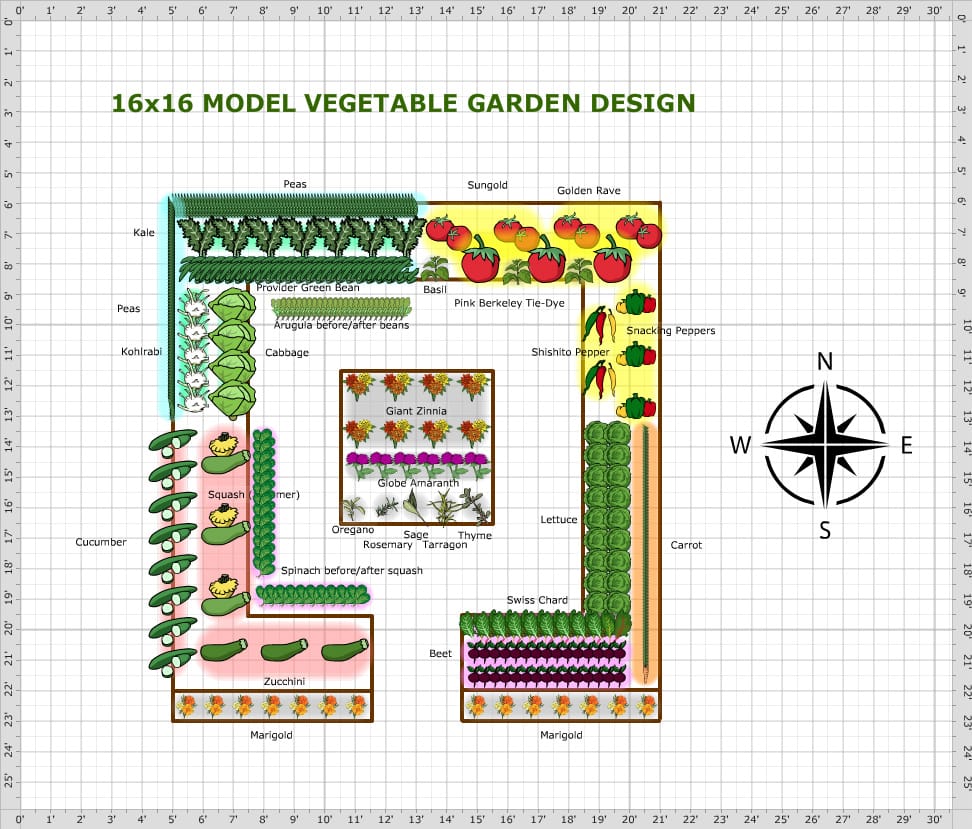
With a thorough understanding of your site’s characteristics and constraints, you can begin the exciting process of designing your garden layout. This phase transforms your analysis and goals into a concrete plan that optimizes space utilization, promotes plant health, and creates an aesthetically pleasing and functional outdoor environment. Effective garden design balances practical considerations with creative vision, resulting in a space that is both productive and beautiful.
Establishing Functional Zones:
Organize your garden space into distinct functional zones based on plant requirements, maintenance needs, and your intended use of different areas. This zoning approach helps ensure that plants with similar needs are grouped together, making care and maintenance more efficient while creating opportunities for beneficial plant interactions.
Create a dedicated vegetable production area in the sunniest, most accessible part of your garden, as most food crops require full sun and regular attention. Within this area, consider subdividing space based on plant families, growth habits, or maintenance requirements. For example, you might group tall plants like corn and pole beans together where they won’t shade shorter crops, or create a separate area for perennial vegetables like asparagus and rhubarb that won’t be disturbed by annual soil preparation.
Designate areas for different types of ornamental plantings based on their specific requirements and your aesthetic goals. Shade-loving plants can transform areas under trees or on the north side of buildings into lush, attractive spaces, while drought-tolerant plants might be perfect for sunny slopes or areas with poor soil drainage. Consider creating transition zones between different garden areas to provide visual continuity and ecological connections.
Plan for practical areas that support your gardening activities, such as composting areas, tool storage, potting benches, and pathways. These utilitarian spaces are essential for garden function but can be designed to integrate seamlessly with your overall aesthetic vision. A well-placed compost area, for example, can be screened with attractive plantings while remaining easily accessible for regular use.
Designing for Plant Success:
Arrange plants within each zone to optimize growing conditions and promote healthy development. Consider mature plant sizes when planning spacing, as overcrowding leads to competition for light, water, and nutrients, resulting in poor performance and increased susceptibility to pests and diseases. While it’s tempting to plant densely for immediate impact, proper spacing pays dividends in plant health and productivity.
Plan for vertical growing opportunities to maximize space utilization and create visual interest. Trellises, arbors, and other vertical structures can support climbing plants while adding architectural elements to your garden design. Consider how vertical elements will cast shadows and plan accordingly, positioning them where shade will be beneficial or at least not detrimental to surrounding plants.
Design pathways and access routes that allow you to reach all areas of your garden without compacting soil or damaging plants. Main pathways should be wide enough for comfortable walking and wheelbarrow access, while narrower paths can provide access to individual beds or planting areas. Consider pathway materials that complement your garden’s aesthetic while providing stable, all-weather access.
Incorporating Aesthetic Elements:
While functionality is paramount, don’t neglect the aesthetic aspects of your garden design. A beautiful garden provides greater satisfaction and enjoyment, encouraging you to spend more time in the space and take better care of your plants. Consider color combinations, seasonal interest, and visual flow when selecting and arranging plants.
Plan for year-round interest by including plants that provide structure, color, or texture during different seasons. Evergreen plants provide winter structure, while spring bulbs offer early season color. Summer annuals can provide continuous blooms, while fall foliage and interesting seed heads extend the season of beauty. Consider how your garden will look and function during each season, not just at peak growing time.
Create focal points and visual anchors that draw the eye and provide structure to your design. These might be specimen plants, garden art, water features, or architectural elements like arbors or pergolas. Focal points help organize the visual space and provide reference points that make the garden feel cohesive and intentional rather than random or chaotic.
Seasonal Planning and Timing Strategies
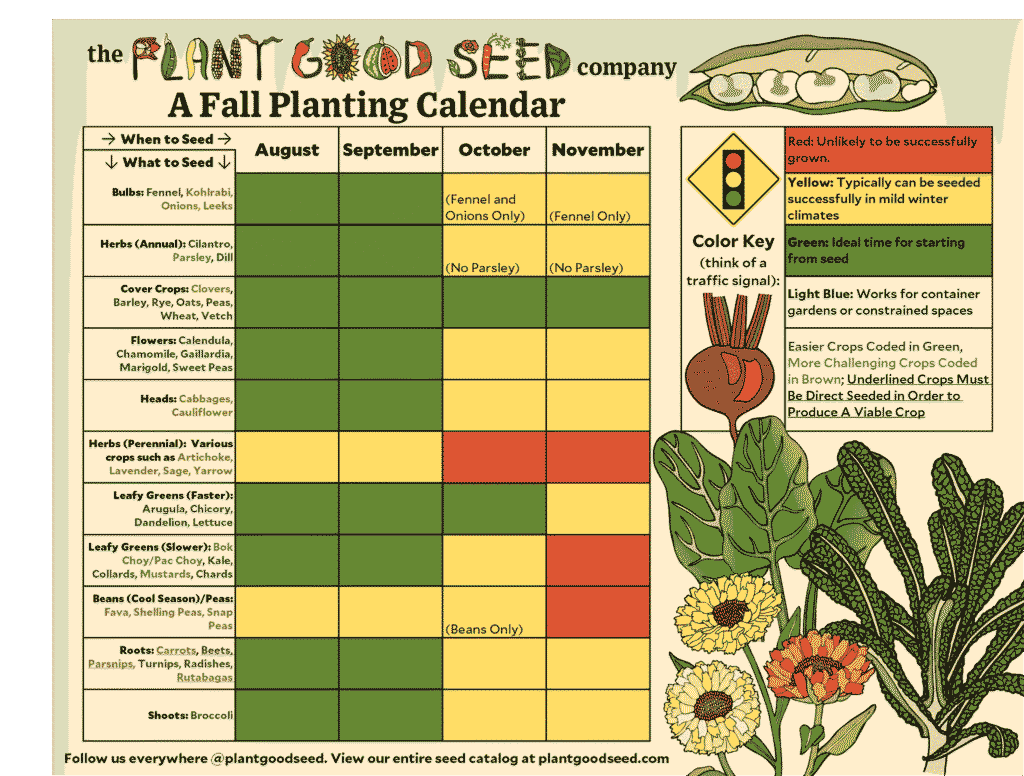
Successful gardening is fundamentally about timing, and an epic gardening planner must account for the complex interplay of seasonal changes, plant life cycles, and optimal growing conditions. Understanding when to plant, when to harvest, when to prepare soil, and when to perform maintenance tasks can mean the difference between a thriving garden and a disappointing one. Seasonal planning requires both broad understanding of natural cycles and detailed attention to the specific timing requirements of individual plants and garden activities.
Understanding Natural Cycles and Plant Rhythms:
Every plant species has evolved to take advantage of specific environmental conditions and seasonal patterns. Cool-season crops like lettuce, peas, and broccoli thrive in the moderate temperatures of spring and fall, while warm-season crops like tomatoes, peppers, and squash require the heat of summer to reach their full potential. Understanding these natural preferences allows you to time plantings for optimal growth and productivity.
Beyond simple temperature preferences, consider the complex relationships between day length, temperature patterns, and plant development. Many plants are sensitive to photoperiod, meaning they respond to changing day length as a signal for flowering, fruiting, or dormancy. Some plants require a period of cold temperatures to flower properly, while others need specific temperature patterns to set fruit or develop properly.
Plan your garden activities around these natural rhythms rather than fighting against them. This approach not only leads to better results but also reduces the need for artificial interventions like excessive watering, fertilizing, or pest control. Plants grown in harmony with natural cycles are typically healthier, more productive, and more resilient to environmental stresses.
Creating Detailed Planting Schedules:
Develop comprehensive planting schedules that account for the specific requirements of each crop or plant variety you intend to grow. Start with your area’s average last spring frost date and first fall frost date, then work backward and forward to determine optimal planting times for different crops. Remember that these are averages, and actual conditions may vary from year to year, so build some flexibility into your schedules.
For vegetable gardens, plan succession plantings of quick-growing crops like lettuce, radishes, and beans to ensure continuous harvests throughout the growing season. Space these plantings two to three weeks apart, adjusting timing based on variety characteristics and seasonal growing conditions. This approach prevents the feast-or-famine cycle that often results from planting everything at once.
Consider the specific timing requirements for starting seeds indoors versus direct seeding in the garden. Some plants benefit from an early start indoors, allowing them to develop strong root systems and mature foliage before being transplanted to the garden. Others prefer direct seeding and may be set back by transplanting. Plan your seed starting schedule to ensure transplants are ready when outdoor conditions are optimal.
Planning for Season Extension:
Incorporate season extension techniques into your planning to maximize your garden’s productive potential. Cold frames, row covers, and other protective structures can extend the growing season for cool-season crops, allowing you to harvest fresh vegetables well into winter in many climates. Plan the placement and timing of these structures as part of your overall garden design.
Consider warm-season extension techniques as well, such as using black plastic mulch to warm soil earlier in spring or providing wind protection for heat-loving plants. These techniques can allow you to grow crops that might otherwise be marginal in your climate or to achieve earlier harvests of warm-season crops.
Plan for succession planting and crop rotation that takes advantage of changing seasonal conditions. As spring crops finish, the space can be replanted with summer crops, and as summer crops wind down, fall and winter crops can take their place. This approach maximizes space utilization while maintaining soil health through diverse plantings.
Plant Selection and Companion Planting
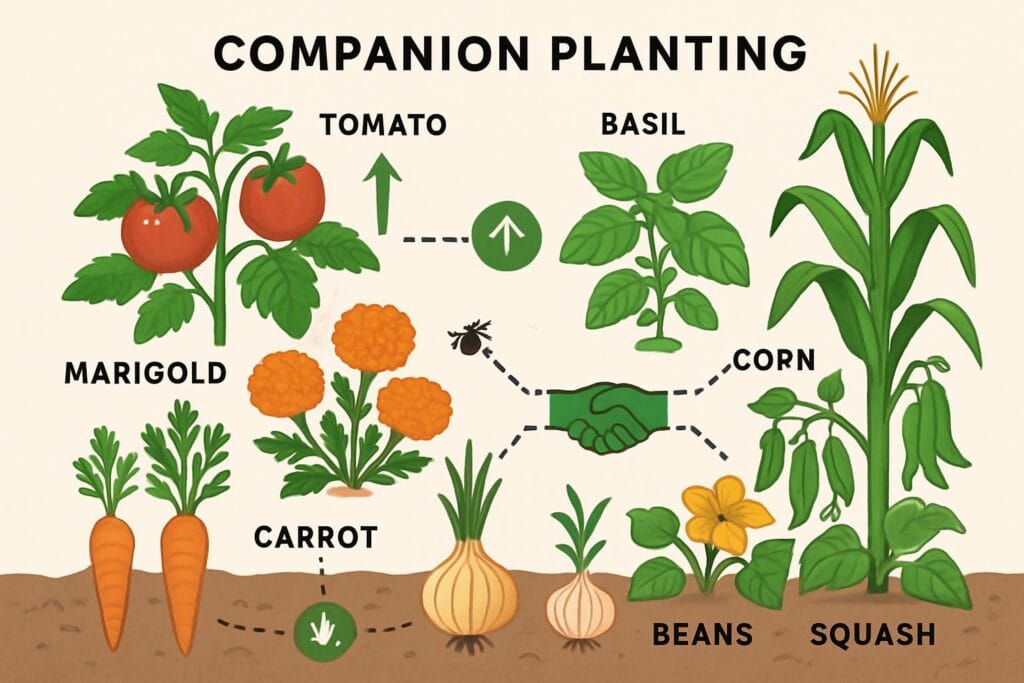
The plants you choose and how you arrange them together form the heart of your epic gardening planner. Successful plant selection goes far beyond simply choosing varieties you’d like to grow; it requires understanding how different plants interact with each other, how they affect soil conditions, and how they can work together to create a more resilient and productive garden ecosystem. Companion planting, in particular, offers opportunities to enhance plant health, improve yields, and reduce pest and disease problems through strategic plant partnerships.
Selecting Plants for Your Specific Conditions:
Choose plants that are well-suited to your specific growing conditions rather than trying to force unsuitable plants to survive in your garden. This approach leads to healthier plants, better yields, and less maintenance while reducing the need for artificial inputs like excessive watering, fertilizing, or pest control. Research the specific requirements of plants you’re considering, including their preferences for sun exposure, soil type, moisture levels, and temperature ranges.
Consider the mature size and growth habits of plants when making selections, ensuring that you have adequate space for proper development. Fast-growing plants can quickly overwhelm slower-growing neighbors, while plants with aggressive root systems might compete too intensely with nearby plantings. Understanding these characteristics helps you create balanced plantings where all plants can thrive.
Look for varieties that are specifically adapted to your local climate and growing conditions. Many seed companies and nurseries offer regional varieties that have been selected or bred for performance in specific areas. These locally adapted varieties often perform better than generic varieties and may have improved resistance to local pests and diseases.
Understanding Beneficial Plant Relationships:
Companion planting is based on the principle that certain plants can benefit each other when grown in proximity. These benefits might include improved nutrient uptake, pest deterrence, disease suppression, or enhanced flavor and growth. Understanding these relationships allows you to create plant communities that are more productive and resilient than individual plants grown in isolation.
Some companion planting relationships are based on complementary resource use. Deep-rooted plants can access nutrients and water from lower soil layers, making them available to shallow-rooted companions through natural processes. Nitrogen-fixing plants like beans and peas can improve soil fertility for neighboring plants, while plants with different growth habits can efficiently utilize available space and light.
Other companion relationships involve chemical interactions between plants. Some plants release compounds through their roots or foliage that can repel pests, inhibit disease organisms, or stimulate growth in nearby plants. Marigolds, for example, are known to release compounds that deter certain soil-dwelling pests, while aromatic herbs like basil may help repel flying insects from nearby vegetables.
Creating Diverse and Resilient Plant Communities:
Design your plantings to include a diverse mix of plant types, families, and characteristics. This diversity creates a more stable and resilient garden ecosystem that is less susceptible to catastrophic losses from pests, diseases, or environmental stresses. Monocultures, where large areas are planted with a single crop or variety, are inherently vulnerable to problems that affect that specific plant.
Include plants that attract and support beneficial insects, birds, and other wildlife that contribute to garden health. Flowering plants provide nectar and pollen for beneficial insects, while plants that produce seeds or berries can attract birds that help control pest populations. Creating habitat for beneficial organisms is one of the most effective long-term strategies for maintaining garden health.
Plan for plants that serve multiple functions in your garden ecosystem. Many herbs, for example, provide culinary value while also attracting beneficial insects and deterring pests. Cover crops can protect and improve soil while providing habitat for beneficial organisms. Fruit trees can provide food while also creating microclimates and vertical structure in your garden design.
Soil Health and Preparation Planning
The foundation of any epic garden lies beneath the surface, in the complex ecosystem of soil organisms, nutrients, and physical structure that supports plant growth. Soil health planning is perhaps the most important aspect of garden planning, yet it’s often overlooked in favor of more immediately visible elements like plant selection and garden design. A comprehensive soil health plan addresses both immediate needs and long-term soil building, creating the foundation for sustained garden productivity and plant health.
Understanding Your Soil’s Current Condition:
Begin your soil planning with a thorough assessment of existing conditions throughout your garden area. Soil conditions can vary significantly even within a small space, so test multiple areas to understand the full range of conditions you’re working with. Professional soil tests can provide detailed information about pH levels, nutrient content, organic matter percentage, and potential contaminants, but you can also learn a great deal through simple observation and basic tests.
Observe how water behaves in different areas of your garden after rain or irrigation. Areas where water pools or runs off quickly indicate drainage issues that may need to be addressed through soil amendments or design modifications. Soil that forms a hard crust after watering or rain may have compaction issues or poor structure that limits root growth and water infiltration.
Examine the existing soil life in your garden by looking for earthworms, beneficial insects, and other soil organisms. Healthy soil teems with life, from microscopic bacteria and fungi to larger organisms like beetles and earthworms. The presence and diversity of soil life indicates soil health and suggests how much intervention may be needed to create optimal growing conditions.
Developing Long-Term Soil Building Strategies:
Create a multi-year plan for improving soil health throughout your garden. Soil building is a gradual process that requires consistent effort over time, but the results are cumulative and increasingly dramatic as soil health improves. Focus on building organic matter content, which improves soil structure, water retention, nutrient availability, and biological activity.
Plan for regular additions of organic matter through compost, aged manure, leaf mold, and other organic amendments. Different organic materials provide different benefits and break down at different rates, so use a variety of materials to provide both immediate and long-term soil improvement. Fresh organic matter feeds soil organisms and provides nutrients, while well-aged compost improves soil structure and water retention.
Consider cover cropping as part of your soil building strategy, especially in vegetable garden areas that may be empty during certain seasons. Cover crops protect soil from erosion, add organic matter when incorporated into the soil, and can provide specific benefits like nitrogen fixation or pest suppression. Plan cover crop timing to fit with your main crop schedules and soil preparation activities.
Planning Soil Amendments and Improvements:
Based on your soil testing and observation, develop specific amendment plans for different areas of your garden. Soil pH adjustments may be needed to optimize nutrient availability for specific plants, while areas with poor drainage might benefit from organic matter additions or physical modifications like raised beds or drainage systems.
Plan amendment applications to coincide with natural soil preparation cycles and plant establishment periods. Fall is often an ideal time for major soil improvements, as amendments have time to integrate with existing soil over winter, and spring soil preparation can focus on fine-tuning and planting activities. However, some amendments work best when applied at specific times relative to planting schedules.
Consider the long-term effects of different amendment strategies on soil biology and chemistry. Some amendments provide quick fixes but may have negative long-term effects, while others work slowly but provide lasting benefits. Synthetic fertilizers, for example, can provide immediate nutrient availability but may disrupt soil biology over time, while organic amendments work more slowly but build long-term soil health and resilience.
Water Management and Irrigation Planning
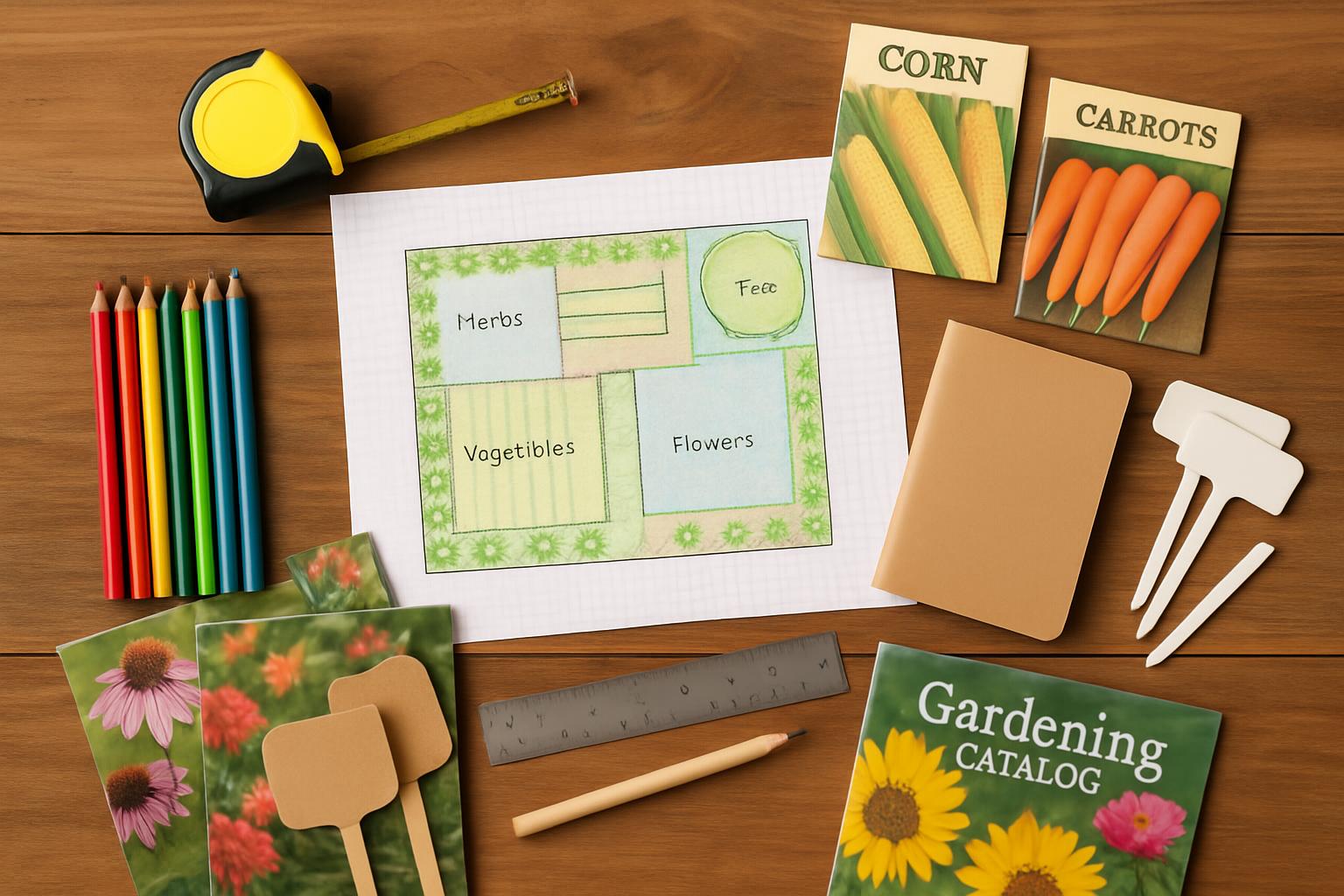
Water is the lifeblood of any garden, and effective water management planning can make the difference between a thriving garden and a struggling one. An epic gardening planner must address not only how to provide adequate water for plant growth but also how to use water efficiently, manage excess water during wet periods, and create resilient systems that can adapt to varying weather conditions. Water planning encompasses everything from irrigation system design to plant selection based on water requirements to soil management practices that optimize water retention and availability.
Assessing Water Needs and Resources:
Begin your water planning by understanding the water requirements of the plants you intend to grow and how these requirements change throughout the growing season. Different plants have vastly different water needs, and these needs vary based on plant size, growth stage, weather conditions, and soil characteristics. Young seedlings may need frequent light watering, while established deep-rooted plants may prefer less frequent but deeper watering.
Evaluate your available water resources, including municipal water supplies, wells, rainwater collection potential, and any existing irrigation infrastructure. Consider both the quantity and quality of available water, as well as any restrictions or costs associated with different water sources. In many areas, water conservation is becoming increasingly important, making efficient water use both environmentally responsible and economically beneficial.
Analyze your garden’s natural water patterns, including how rainfall is distributed throughout your growing season, where water tends to collect or drain away quickly, and how different areas of your garden respond to natural precipitation. This understanding will help you design irrigation systems that supplement natural water sources efficiently and identify areas that may need special attention during dry or wet periods.
Designing Efficient Irrigation Systems:
Plan irrigation systems that deliver water efficiently to plant root zones while minimizing waste through evaporation, runoff, or overspray. Drip irrigation systems are often the most efficient choice for vegetable gardens and ornamental beds, delivering water directly to soil around plant roots with minimal waste. Soaker hoses provide a simpler alternative that can be very effective for row crops or linear plantings.
Consider zoning your irrigation system based on plant water requirements and sun exposure. Plants with similar water needs can be grouped together and watered with the same system, while areas with different requirements can be watered separately. This approach prevents overwatering drought-tolerant plants or underwatering thirsty crops.
Plan for automation and timing control that allows you to water efficiently even when you’re not available to monitor conditions. Timer-controlled systems can provide consistent watering schedules, while more sophisticated controllers can adjust watering based on weather conditions, soil moisture levels, or plant growth stages. However, don’t rely entirely on automation; regular observation and adjustment are essential for optimal results.
Implementing Water Conservation Strategies:
Incorporate water conservation techniques throughout your garden planning to reduce water requirements while maintaining plant health. Mulching is one of the most effective water conservation strategies, reducing evaporation from soil surfaces while also suppressing weeds and moderating soil temperatures. Plan for adequate mulch materials and application timing as part of your overall garden management strategy.
Select plants that are appropriate for your local rainfall patterns and water availability. Drought-tolerant plants can reduce irrigation requirements significantly, while plants that are naturally adapted to your local climate will generally require less supplemental watering than exotic species. This doesn’t mean you can’t grow water-loving plants, but plan their placement and care requirements accordingly.
Design your garden layout to take advantage of natural water patterns and microclimates. Areas that naturally receive more moisture can support plants with higher water requirements, while drier areas are perfect for drought-tolerant species. Consider how buildings, slopes, and other features affect water distribution and plan accordingly.
Maintenance Scheduling and Garden Management
Creating an epic garden requires not just good initial planning but also consistent, well-timed maintenance throughout the growing season and beyond. A comprehensive maintenance schedule ensures that important tasks are completed at optimal times, prevents small problems from becoming major issues, and helps maintain the health and productivity of your garden ecosystem. Effective maintenance planning balances the need for regular care with efficient use of your time and energy, creating sustainable routines that support long-term garden success.
Developing Seasonal Maintenance Calendars:
Create detailed maintenance calendars that outline specific tasks for each season and month of the year. These calendars should account for your local climate patterns, the specific plants you’re growing, and the unique characteristics of your garden. While general gardening calendars can provide useful guidance, your maintenance schedule should be customized to your specific situation and goals.
Spring maintenance typically focuses on soil preparation, early plantings, and infrastructure repairs or improvements. Plan for soil testing, compost application, seed starting, and early pest monitoring. This is also an ideal time for major garden modifications or expansions, as soil conditions are often optimal for digging and planting activities.
Summer maintenance emphasizes ongoing care activities like watering, weeding, pest monitoring, and harvesting. Plan for regular inspection schedules that allow you to identify and address problems before they become serious. Summer is also the time for succession plantings, pruning of spring-flowering shrubs, and preparation for fall plantings.
Fall maintenance focuses on harvest completion, garden cleanup, soil improvement, and preparation for winter. Plan for compost application, cover crop planting, tool maintenance, and protection of tender plants. Fall is also an excellent time for planting trees, shrubs, and perennials, as cooler temperatures and increased rainfall support root establishment.
Winter maintenance varies significantly based on climate but often includes planning activities, tool maintenance, seed ordering, and care of indoor plants or greenhouse crops. Use winter months for garden planning, education, and preparation for the coming growing season.
Creating Efficient Work Routines:
Develop regular routines that make garden maintenance more efficient and less overwhelming. Daily or weekly garden walks allow you to monitor plant health, identify emerging problems, and enjoy your garden’s progress. These regular observations are invaluable for early problem detection and help you stay connected with your garden’s changing needs.
Plan maintenance tasks in logical sequences that minimize wasted motion and maximize efficiency. For example, combine watering with pest monitoring and harvesting, or plan weeding sessions to coincide with mulch application. Grouping related tasks saves time and ensures that important activities aren’t overlooked.
Consider seasonal workflows that take advantage of optimal conditions and natural timing. Soil preparation is most efficient when soil moisture levels are appropriate, while pest control measures are most effective when timed to target specific life cycles. Planning these activities in advance ensures that you’re ready to act when conditions are optimal.
Planning for Problem Prevention and Management:
Develop integrated pest and disease management strategies that emphasize prevention over treatment. This approach is more effective, environmentally friendly, and economically sustainable than reactive treatments. Plan for regular monitoring, beneficial habitat creation, and cultural practices that promote plant health and resilience.
Create contingency plans for common problems like drought, excessive rainfall, pest outbreaks, or disease issues. Having plans in place allows you to respond quickly and effectively when problems arise, minimizing damage and recovery time. Consider backup water sources, emergency pest control measures, and alternative planting strategies for challenging conditions.
Plan for ongoing education and skill development that will improve your garden management capabilities over time. Gardening is a continuous learning process, and staying current with new techniques, plant varieties, and management strategies will enhance your success. Consider joining local gardening groups, attending workshops, or participating in online gardening communities.
Frequently Asked Questions
How far in advance should I start planning my garden?
Ideally, begin planning your garden at least 6-12 months in advance. This allows time for soil testing and improvement, seed ordering, infrastructure development, and careful consideration of plant selections. However, you can start planning at any time and implement improvements gradually. Even mid-season planning can help optimize the remainder of your growing season and prepare for the following year.
What’s the most important factor to consider when creating a garden plan?
Understanding your specific growing conditions is the most crucial factor. This includes your climate, soil conditions, sun exposure, and water availability. All other planning decisions should be based on these fundamental conditions. Trying to grow plants unsuited to your conditions will lead to frustration and poor results, regardless of how well other aspects are planned.
How do I determine the right size for my garden?
Start smaller than you think you want, especially if you’re a beginning gardener. A well-maintained small garden will be more productive and satisfying than a large garden that becomes overwhelming. Consider the time you have available for garden maintenance, your physical capabilities, and your family’s actual consumption of garden produce. You can always expand in future seasons.
Should I focus on vegetables or ornamental plants in my garden plan?
The best approach depends on your goals and interests. Many successful gardens combine both food production and ornamental value. Consider starting with easy-to-grow vegetables that your family enjoys eating, then adding ornamental plants that provide beauty and support beneficial insects. Many edible plants are also attractive, allowing you to achieve both goals simultaneously.
How do I plan for crop rotation in a small garden?
Even small gardens benefit from crop rotation principles. Divide your vegetable growing area into sections and rotate plant families between sections each year. Keep records of what was planted where, and avoid planting the same family in the same location for at least 2-3 years. In very small spaces, focus on soil improvement and diverse plantings rather than strict rotation schedules.
What tools do I need for garden planning?

Basic planning tools include graph paper or a computer design program, measuring tape, soil thermometer, pH test kit, and a notebook for record keeping. Many free online garden planning tools are available, or you can use simple sketching materials. The most important tool is careful observation of your garden conditions and plant performance.
How do I plan for year-round garden interest?
Select plants that provide interest during different seasons through flowers, foliage, bark, berries, or structure. Include spring bulbs, summer annuals, fall foliage plants, and evergreens for winter structure. Plan for succession plantings in vegetable areas and consider season extension techniques like cold frames or row covers to extend productive periods.
Should I plan my entire garden at once or develop it gradually?
Most successful gardens develop gradually over several years. Start with a master plan that outlines your long-term vision, then implement it in phases based on your time, budget, and energy. This approach allows you to learn from each phase and make adjustments before moving to the next area. It also spreads costs and labor over time.
How do I plan for water-wise gardening?
Group plants with similar water requirements together, choose plants adapted to your local rainfall patterns, plan for efficient irrigation systems, and incorporate water conservation techniques like mulching and soil improvement. Consider rainwater collection and drought-tolerant plant varieties. Design your garden layout to take advantage of natural water patterns and microclimates.
What’s the best way to keep track of my garden plan and progress?
Maintain a garden journal that includes your original plans, planting dates, variety information, weather observations, pest and disease notes, and harvest records. Take photos throughout the season to document progress and problems. Many gardeners find that combining written records with digital photos provides the most useful long-term reference.
How do I plan for pest and disease management?
Focus on prevention through plant selection, proper spacing, soil health, and beneficial habitat creation. Plan for regular monitoring and early intervention strategies. Research common problems in your area and plan preventive measures accordingly. Consider companion planting and integrated pest management approaches rather than relying solely on chemical treatments.
Can I create an effective garden plan without extensive gardening experience?
Absolutely! Good planning can actually compensate for limited experience by helping you avoid common mistakes and make informed decisions. Start with reliable, easy-to-grow plants and simple techniques. Learn from local experienced gardeners, extension services, and reputable gardening resources. Remember that every experienced gardener started as a beginner, and planning helps accelerate the learning process.





